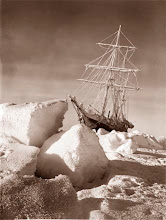(As published in The Kansas City Star:)
The rest of the world might consider life there a banishment, might think the place is some frozen gulag to be endured.
But Brack relished his sunless winter at the bottom of the world. He tended a greenhouse, learned to play guitar, picked up conversational Italian. Venturing out of the Amundsen-Scott station meant dressing like an astronaut, but it promised the mind-blowing colors of the aurora australis.
Brack is part of a breed that has been drawn to Antarctica for better than a century — men and women intrigued more by the exotic than the easy, who think life is too short to be squandered in someplace ordinary.
Working all three U.S. research stations on the continent, Brack never went hungry or lacked a warm bed and an Internet connection.
At 22, he set aside a business degree and went to work as an Antarctic chef. Raytheon — the giant defense contractor that also runs the American polar research stations — started him at a field camp about eight miles from McMurdo Station on the Ross Ice Shelf on the continent’s New Zealand side.
MacTown, as regulars call it, is a summertime home for about 1,000 people — in winter, a fifth of that. Typically, about half the people are researchers. The rest are people such as Brack, who keep the scientists warm, fed, healthy and free to pursue research.
